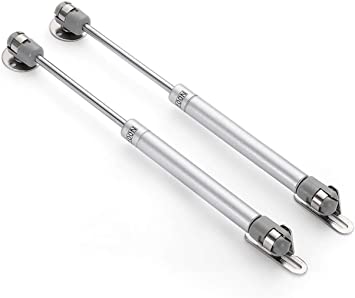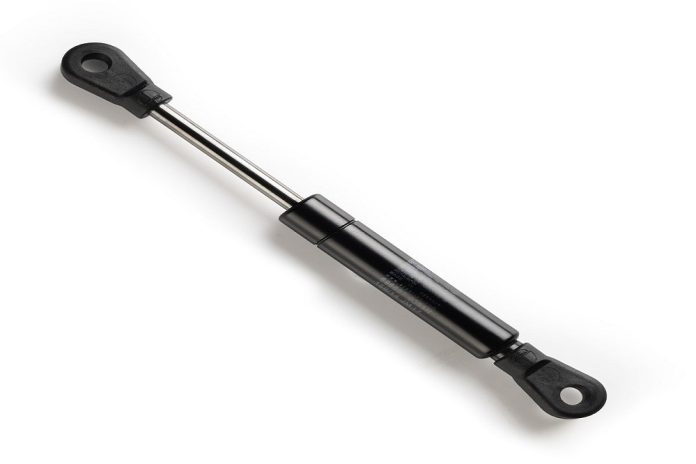Gas struts are versatile hydropneumatics lifting mechanism tools (including both gas and liquid) that help lift, lower, and support heavy and awkward objects easily. Most found in various door hardware configurations, but with almost endless uses. In everyday use, gas strut brackets have become very common in cars as adjustable chairs and table supports, even with all kinds of easy-to-open hatches and panels, and even small electronic devices.
As the name implies, these brackets rely on pressurized gas along with oil-based lubricants to assist or counteract various external forces. Compressed gas provides a controlled way to store and release energy as smooth, damped movements are transmitted through sliding pistons and rods. Some of these terms refer to a specific group of gas strut brackets components, configurations, and applications, but are also commonly referred to as gas springs, cylinders, or dampers. Technically, standard gas struts are used to support the object as it moves, gas dampers are used to control or limit its movement, and damping gas springs handle both bits.

How do Gas strut brackets work?
Gas strut brackets are ultra-rugged bicycle pumps, except that they are filled with pressurized nitrogen gas and petroleum and are completely sealed to prevent them from escaping. The gas in the mechanism that allows the spring to store energy, oil slows the movement of the piston and also provides lubrication. Like a bicycle pump, there is a snug piston attached to a rod that can slide back and forth in the cylinder. Pushing the gas spring, pushes the piston rod and piston into the cylinder, compressing the gas. When you stop pushing and releasing, the pressure of the gas pushes the piston back. So far, it sounds similar to a bicycle pump, but it works a little differently. Unlike a bicycle pump, the gas in the cylinder can flow left and right through or around the piston as it reciprocates. How this is done depends on the design of the gas strut brackets.
Pistons typically have one or more holes or valves. Now, if the piston can move through the gas, you might think it’s not compressing the gas at all. However, keep in mind that the entire cylinder is completely sealed. When the piston rod is inside the cylinder, it occupies the space previously occupied by the gas. That is, when the gas strut brackets are fully retracted, the gas inside is compressed by an amount equal to the volume of the piston rod. When the piston rod occupies the entire cylinder, you can see that the gas is considerably compressed. Gas pressure can be very high, usually about 170 times higher than normal atmospheric pressure.
Now that we have understood the workings of gas strut brackets, Let’s look at some do’s and don’ts of gas strut brackets.
The gas struts brackets should be used in pairs to ensure there is no side loading. They have to be mounted down to make sure the seal is always secured and also there is enough lubricant for the smooth working of the brackets. You should make sure that you do not apply any kind of solvents to the gas strut brackets. You also need to make sure to not paint the gas struts so that it does not transfer the paint to the piston. People should be sure enough to not apply anything onto the piston rod as this can cause the main rod to fail during the cycling process.
Therefore, these are some important things that you have to keep in mind when considering gas strut brackets for use in your daily life.
Apart from this if you are interested to know more about Curtains and Blinds then visit our Interior Design category
















